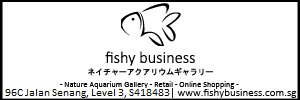Welcome Genn,
I would add a few things to your setup.
Replace the airstone with a sponge filter (e.g., Dirt Magnet) or a corner box filter with gravel and a floss topping. Either will give lots of biofiltration after a week or so of running, and lower ammonia levels quite a bit. Adding some mulm from an aged tank can speed up the process.
I have used either sunken mops or boiled and well-rinsed peat as a substrate for spawning. Collect the peat or mops weekly. You can pick eggs from the mops and shallow-water incubate, or just store the peat in rather wet condition in a sealed plastic fish bag for about 3 weeks. Don't use the thick freezer bags as they may suffocate the eggs.
GAR are bottom spawners and will only spawn in floating mops if given no choice.
I found it is best to use a single pair of well-conditioned (lots of worms, etc.) fish to spawn alone. If a second female is in the tank, she improves her genetic chances by carefully eating every egg just as the other female lays it. Result: No eggs!
Frequent small (10%?) water changes seem to help spawning efforts, too.
HTH
Good luck,
Wright
01 760 872-3995
805 Valley West Circle
Bishop, CA 93514 USA








 Reply With Quote
Reply With Quote




Bookmarks